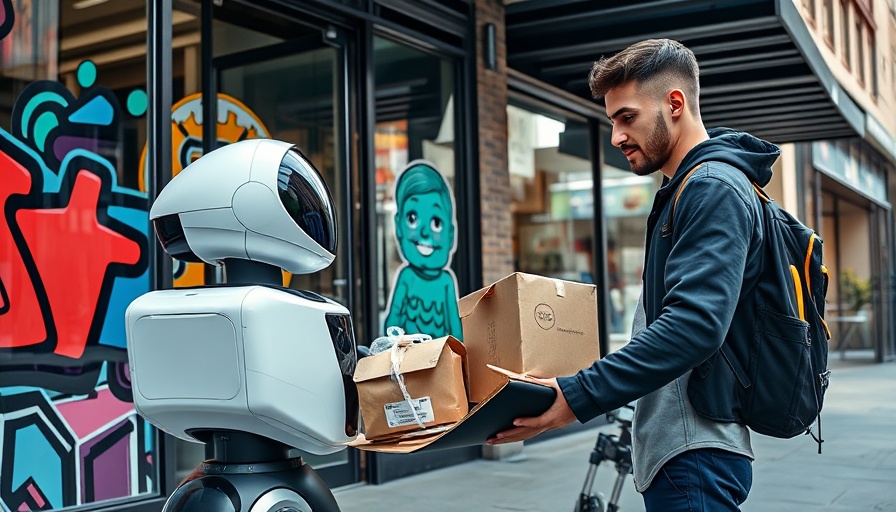
DoorDash and Coco: A New Era of Urban Delivery
In a groundbreaking partnership, DoorDash is stepping into the realm of robotic deliveries in Los Angeles and Chicago by deploying a fleet of remotely-operated robots in conjunction with Coco Robotics. This innovation marks a significant shift in last-mile delivery strategies, acknowledging the complexities of urban logistics by opting for a hybrid model that incorporates human oversight.
Understanding the Pragmatic Approach
Instead of striving for full autonomy, which has proven to be a daunting challenge in bustling city environments, DoorDash has chosen a more pragmatic path. The company is utilizing teleoperation, allowing remote operators to monitor feeds from cameras and sensors on the robots. This human element is crucial for navigating unpredictable urban scenarios, such as busy intersections, obstacles, and special drop-off requirements. The blend of advanced technology with human intervention is more than just a stop-gap; it is a necessary strategy for success in the complex world of city delivery.
The Technological Backbone of Remote Operations
The Coco robots are equipped with sophisticated technology, including multiple cameras and sensors that stream real-time video to remote pilots via reliable LTE/5G connections. This allows for effective management of deliveries, especially within a typical range of one mile. With efficient battery performance and onboard processing that handles the basic navigation, human operators can concentrate on intricate maneuvers that robots may struggle to handle autonomously.
Challenges in Achieving Full Autonomy
The path toward fully autonomous deliveries is fraught with challenges, similar to those faced when developing self-driving vehicles. Robots can encounter unexpected interactions with pedestrians, vandalism, and logistical barriers such as cracked pavements. The approach taken by DoorDash and Coco shifts the focus from perfecting autonomous vehicles to developing a cohesive system that can utilize various delivery methods—human-operated, robotic, or potentially drones—based on real-time conditions, such as order size and traffic.
Coco Robotics: Fueling the Revolution
Founded in 2020, Coco Robotics has rapidly become a staple in the urban delivery landscape. With a fleet exceeding 1,000 robots, the company’s partnerships have expanded from Europe with Wolt to the significant U.S. market. Notably, in Los Angeles, Coco serves around 600 merchants, offering a cost-effective alternative for restaurants while enhancing customer service and experience.
A Glance Back: The Evolution of Delivery Technologies
Reflecting on the past, it’s fascinating to consider how the ambitions for aerial drone deliveries began with Amazon’s infamous “Octocopter” in 2013. While drone technology has evolved, widespread adoption is still limited, creating a unique opportunity for robotic deliveries to fill the gap with more reliable and practical solutions.
Implications for the Future of Delivery Services
The collaboration between DoorDash and Coco symbolizes a broader movement towards integrated delivery systems. Companies are recognizing the necessity to not only innovate but to adapt their strategies in real-time to meet market demands. As urban areas continue to grow and evolve, so too must the delivery methods used to cater to their residents.
Call to Action
For businesses in the tech-driven landscape, now is the moment to observe how this hybrid delivery model could revolutionize your operations. Understanding the implications and technology behind such advancements opens avenues for integrating similar strategies into your business process. Engage in these conversations, explore, and perhaps consider how automation and human oversight could streamline your delivery networks.
 Add Row
Add Row  Add
Add 




 Add Row
Add Row  Add
Add 

Write A Comment